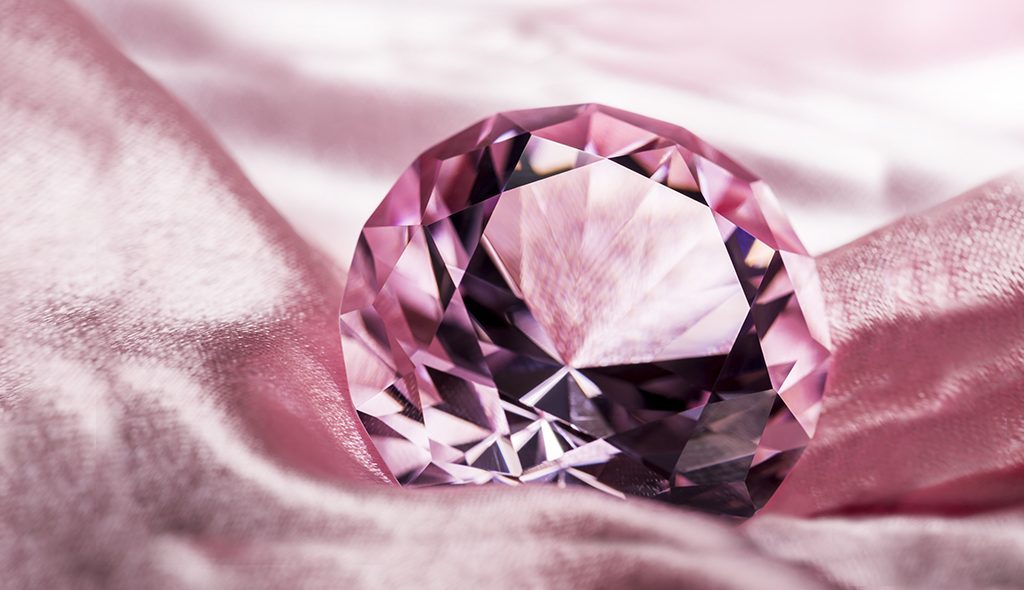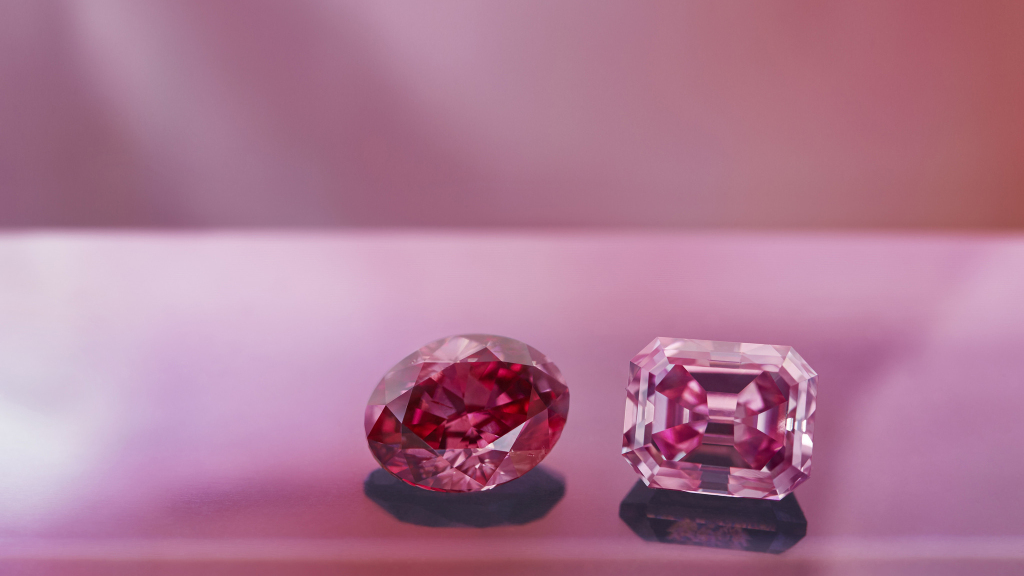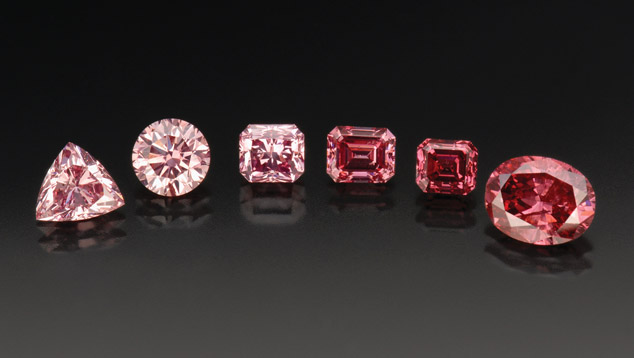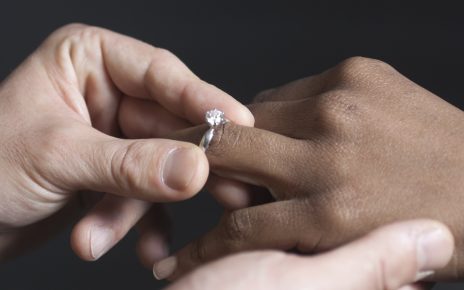Beauty, rarity, magnificence and a message of love make pink diamond one of the ultimate symbols of desire. But before acquirer, four points better known under the name 4C are to be considered with the greatest attention.
- It is the unit of weight of the pink diamond. The bigger the diamond, the rarer it is.
- The most coveted pink diamonds are completely colorless and are represented by letter D. The bottom of the color scale is the letter Z, the diamond is then tinted.
- Pink diamonds have small imperfections called inclusions. The fewer inclusions, the more precious is the stone.
- Refers to the symmetry and the proportions, that’s what gives the pink diamond all its brilliance.

Carat of Pink Diamond
The weight of a pink diamond is expressed in carat. This weight originates from the carob seed, carob fruit. This seed is well known for its constant weight and served in antiquity as a unit of measure for the gemstone trade, until the day when the carat weight was officially set at 0.20 grams, or 5 carats = 1 gram.
A carat is divided into 100 cents. A pink diamond weighing 0.25 carat (one-quarter carat) is said to weigh 25 cents and this up to 99 hundredths. Beyond one carat, hundredths terms are no longer used.
The bigger the pink diamond is, the rarer it is and the more expensive it is to the carat. At equal quality, the price of a 0.40ct diamond worth, for example, 1500 € the carat will then be worth 1900 € the carat if it weighs 0.50ct. In the same logic but with unequal quality, two diamonds of the same weight can have a price difference ranging from 1 to 5.
Purity of Pink Diamond
Most pink diamonds contain very small natural impurities known as inclusions. To appreciate its purity, a pink diamond is examined using a magnifying glass x10. In addition to internal inclusions, irregularities on the surface are also considered imperfections. These two parameters together determine the criterion “Purity”.
The less imperfections found means a rarer and more expensive pink diamond. Many inclusions are imperceptible to the naked eye and must be magnified with a magnifying glass to be observed. Purity is assessed using several methods to determine the quantity, location and size of inclusions. On a pink diamond with a purity lower than SI2, the inclusions will probably be visible to the naked eye. But contrary to popular belief, more purity is not always synonymous with more beauty.
A pink diamond with defects invisible to the naked eye is not necessarily less beautiful in appearance than a pink diamond of superior purity, but the difference in price can be significant.
It is true that a high purity will be more coveted because it is rarer, more precious and therefore more desirable, but what is important above all is to make the right choice according to the motivations of each one. We suggest, however, at least SI2 or higher purity.
We recall that above SI2 the representations of impurities described here are invisible to the naked eye and it is only from P1 or P2 that a middle eye begins to distinguish them.

Size (cut) of Pink Diamond
The size of a pink diamond refers to its proportions. Between the 4C, size is the criterion most directly influenced by man. The other three criteria are dictated by nature. Very often we tend to confuse size and shape.
Pink diamonds are cut into various shapes depending on the original shape of the rough diamond.
Round diamonds are usually cut with 57 facets. This polishing obeys mathematical formulas so that the facets are arranged at very precise angles to each other, this in order to maximize the amount of light reflected by the pink diamond and to increase its fire and brilliance to put the more worth its beauty. The different evaluations attributed to the size of a diamond are:
– Ideal Size (Ideal)
(Certificates issued by the IGI and AGS laboratories only)
This size category meets strict percentages criteria to combine the best of brilliance and fire. Technically, the very high end.
– Excellent Size (Excellent)
This size category is also very beautiful, though more flexible on the percentages. Many experts prefer the look of this size to the ideal size.
– Very good size (Very Good)
As its name indicates this category, in addition to a very good size, is of a better quality / price ratio compared to the sizes Ideal and Excellent.
– Good size (Good-Good)
When a pink diamond is cut to the right proportions, light is reflected uniformly from one facet to another and then dispersed through the top of the stone called the crown. This size is very good value compared to the sizes Ideal, Excellent and Very Good.
– Too thick (Fair Fair – Poor Poor, Unusual)
When the size of a pink diamond is thick, the light escapes partially through the lower part of the stone called the cylinder head.
– Too flat (Fair Fair – Poor Poor, Unusual)
When the size of a diamond is flat, the light escapes completely through the bolt before it can be reflected.
The size or proportion of a pink diamond is measured as a percentage of its diameter. The diameter being the basis of calculation, we say that the diameter is equal to 100%.
For example: Take a pink diamond whose diameter is 10 millimeters, whose table (the largest facet of the top) measures 5.6 millimeters and whose total height (table to the breech point) is 6.1 millimeters.
The pink diamond will be described as having a table of 56% and a height of 61%. Table and height percentages are the two key criteria for determining good proportions.
The secret to the beauty, brilliance and fire of a pink diamond lies in a good size. But as in the notion of “ideal beauty”, the notion of “better size” remains subjective.
Although a given set of proportions for a diamond may be preferred, another person may prefer slightly different proportions. This personal preference, even among the pink diamond experts, will always remain a real debate in the definition of the “best size” of a diamond, because visually, the differences from one classification to another are so insignificant to the eye naked that they are most often indistinguishable.
Man has designed machines capable of measuring the proportions of a pink diamond from every angle. It is this precision that made it possible to imagine and define such strict standards. In turn these criteria guide us not only in the choice of size, but also allow us to apprehend a little of the science on which they are based.
All these considerations, as important and sophisticated as they are, must not mislead us: Our goal is the choice of a brilliant, sparkling, full of fire diamond and many sizes can fully satisfy us in our quest for pink diamonds.
The proportions are not the same for all forms. Each of them has its own criteria for the sole purpose of achieving perfection. Thus the proportions of table and height are formulated differently from each other and always to maximize brightness, fire and flicker. Even if the numbers change, the goal is to highlight the individuality and character of each form.






